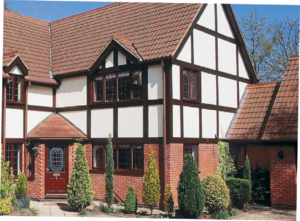What Is Energy-Efficient Windows And Why Is Everyone Talking About It?
페이지 정보

본문

Energy-Efficient Windows: An Overview
In the last few years, the need for energy-efficient windows has surged, driven by increasing energy expenses, increased ecological awareness, and the desire for enhanced convenience in homes and industrial structures. Energy-efficient windows are created to decrease energy consumption, improve thermal convenience, and lower greenhouse gas emissions. This comprehensive guide will check out the features, advantages, and numerous types of energy-efficient windows available in the market.
Understanding Energy-Efficient Windows
Energy-efficient windows are specially engineered to lessen energy loss while optimizing natural light and aesthetics. They achieve these objectives through a mix of innovations that improve insulation, minimize air seepage, and reflect or absorb solar heat.
Secret Components of Energy-Efficient Windows:
Frame Materials: The product of the window frame significantly affects its energy effectiveness. Common materials consist of:
- Vinyl: Excellent thermal efficiency and low maintenance.
- Wood: Natural insulator but needs routine upkeep.
- Aluminum: Durable but less efficient unless thermally broken.
- Fiberglass: High toughness and energy efficiency, often utilized in high-end applications.
Glazing: The type of glazing (or glass) used is a vital aspect:
- Single Glazing: Least efficient; allows significant heat transfer.
- Double Glazing: Two panes of glass with a space in between, substantially enhancing insulation.
- Triple Glazing: Three panes of glass; provides the best efficiency however at a greater cost.
Low-E Coatings: Low-emissivity coatings are thin layers used to glass that reflect heat back into a building throughout winter season while deflecting solar heat in summer. This feature can dramatically lower cooling and heating costs.
Gas Fills: Argon or krypton gas is frequently used to fill the areas between the panes of double and triple-glazed windows, providing it with extra insulation residential or commercial properties.
Warm Edge Spacers: These are products used to separate the panes of glass. Warm-edge spacers help lower thermal bridging and enhance total window effectiveness.
Benefits of Energy-Efficient Windows
The advantages of installing energy-efficient windows in a structure are significant, both economically and ecologically.
Economic Benefits:
- Lower Energy Bills: By minimizing the quantity of heat lost during winter season and heat gained in summer, energy-efficient windows can lead to considerable savings in heating & cooling expenses.
- Increased Property Value: Homes with energy-efficient upgrades might have a higher resale worth. Numerous purchasers actively seek out energy-efficient features.
- Tax Credits and Rebates: Many regions use financial incentives for house owners who update to energy-efficient windows, making them more inexpensive.
Ecological Benefits:
- Reduced Carbon Footprint: By decreasing energy intake, energy-efficient windows add to a reduction in greenhouse gas emissions.
- Enhanced Indoor Air Quality: Better insulated homes frequently reveal a reduction in drafts and moisture problems, which can cause healthier living environments.
Convenience Benefits:
- Consistent Indoor Temperature: Energy-efficient windows assist maintain a steadier indoor temperature, reducing cold spots near windows and getting rid of getting too hot.
- UV Protection: Many energy-efficient windows can block hazardous UV rays, safeguarding furniture and flooring from fading.
Kinds Of Energy-Efficient Windows
Picking the best type of energy-efficient window will depend upon various elements such as climate, developing design, and budget. Below are some commonly used types:
| Window Type | Description | Best For |
|---|---|---|
| Casement Windows | Depended upon one side, these windows open outwards, offering excellent ventilation and airtightness. | Locations needing excellent airflow |
| Double-Hung Windows | Functions two operable sashes that move up and down. They permit flexible ventilation and are easy to clean. | Traditional-style homes |
| Moving Windows | These windows move open horizontally, making them easy to operate and ideal for those who have restricted area. | Areas with limited space |
| Image Windows | Set windows that do closed, making the most of views and natural light, frequently paired with adjustable windows for ventilation. | Living spaces, dining areas |
| Bay and Bow Windows | Extended windows that produce a shelf or nook, including architectural appeal and increased sunlight. | Family rooms, breakfast nooks |
Picking the Right Energy-Efficient Window
When choosing energy-efficient windows, homeowners should consider the list below elements:
- Local Climate: Different areas have different climate needs. For instance, homes in the northern U.S. may gain from windows that retain heat, whereas southern homes may need windows that reflect heat.
- Window Orientation: The direction that windows face can affect energy effectiveness. South-facing windows may gain from solar heat gain in winter, while north-facing windows may require more insulation.
- Effectiveness Ratings: Look for windows with a good Energy Star rating, which certifies them as efficient in providing energy performance.
Often Asked Questions (FAQs)
What is the distinction between energy-efficient and standard windows?Energy-efficient windows are developed with unique products and technologies that improve insulation and lower energy loss, whereas standard windows might do not have these functions, leading to higher energy usage.
How can I inform if my windows are energy-efficient?Try to find indicators such as Low-E coverings, numerous panes of glass (top double glazing installation (mouse click the following web site) or triple glazing), and an excellent energy performance score (like Energy Star).
Are energy-efficient windows worth the investment?Yes, while they may have a greater upfront cost, energy-efficient windows often save property owners cash on energy costs and decrease carbon emissions gradually.

Can I install energy-efficient windows myself?While some property owners may tackle window setup as a DIY job, expert setup is often suggested to ensure appropriate sealing and insulation.
The length of time will energy-efficient windows last?With correct maintenance, energy-efficient windows can last 20 to 30 years, making them a long-lasting investment for your home.
Energy-efficient windows offer many benefits, including lower energy costs, enhanced comfort, and decreased environmental effect. By understanding their features, benefits, and the various types available, homeowners can make informed choices that contribute not only to their own convenience but also to a more sustainable future. Purchasing energy-efficient windows is not just a wise option for your wallet; it is a substantial step towards developing a greener and more efficient international environment.
- 이전글3 Easy Ways That Will Help Your Marriage 25.07.09
- 다음글열대그러한필드이름지명및77에대한197 25.07.09

